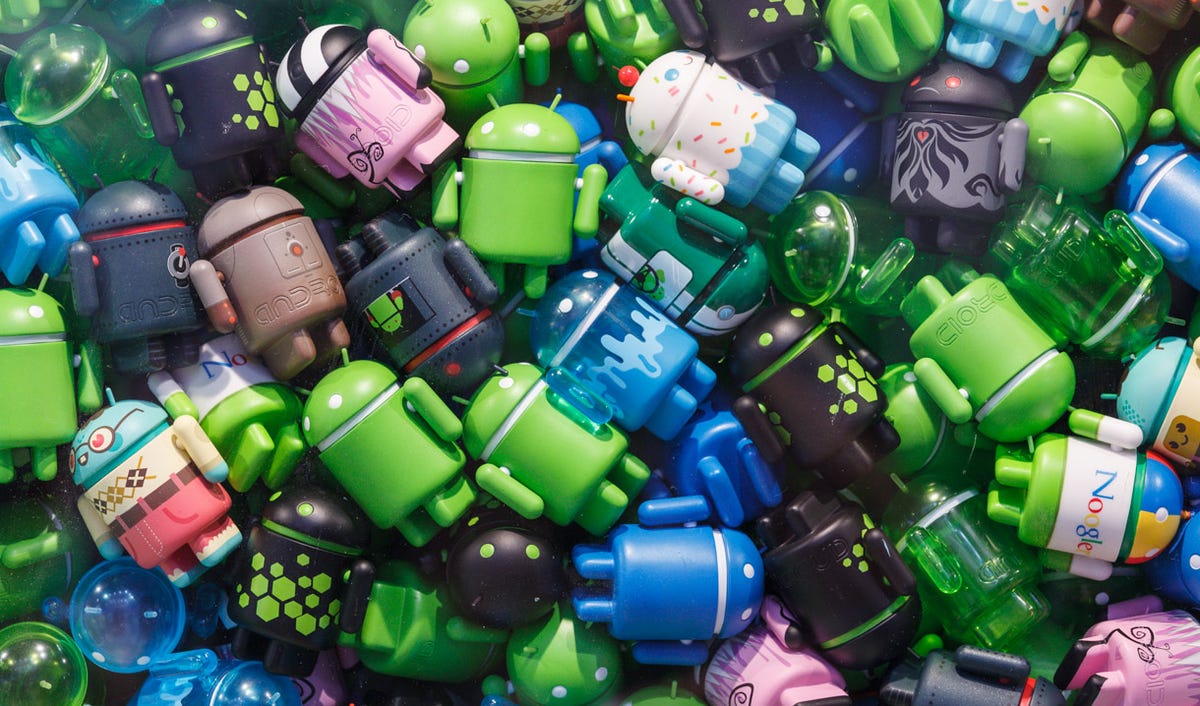
Android through the years
It's been more than 10 years since Google rolled out the first version of Android to consumers in 2008. Since then, the mobile OS has blasted past the 2 billion device mark and powers almost nine out of every 10 smartphones shipped globally. With the introduction of Android Q at Google I/O 2019, it shows no sign of slowing down. We take a look at how the OS has evolved over time.
Originally published on Feb. 22, 2016.
1.0 G1 (2008)
Android 1.0 debuted on the HTC Dream (aka T-Mobile G1) and served up apps through Android Market with 35 apps at launch. Its Google Maps used the phone's GPS and Wi-Fi, and it had an Android browser built right in.
1.5 Cupcake (2009)
As the first major update of Android, Cupcake added widgets for the home screen, an onscreen keyboard, video recording in the camera and a copy-and-paste function to the web browser.
1.6 Donut (2009)
Android Donut brought search capabilities for everything on your phone, introduced the Android Market (the precursor to the Google Play store) and additional battery usage info.
2.0 Eclair (2009)
Microsoft users rejoiced at Eclair's support for Exchange. The OS also supported multiple Google accounts and let you search within text and SMS messages. It also added multitouch support and the camera improved with flash and digital zoom.
2.2 Froyo (2010)
Froyo introduced Flash Player 10.1, which bridged gaps by allowing phones to play video and stream audio. The camera flash now worked on video, Bluetooth compatibility was boosted and you could use your phone as a Wi-Fi hotspot.
2.3 Gingerbread (2011)
With Gingerbread, the world got to know near-field communication (NFC), which allowed phones to connect with other nearby devices. The OS also allowed video calling using the front-facing camera and added a download manager.
3.0 Honeycomb (2011)
Honeycomb was the first update for tablets only. It included 3D graphics support, side-by-side browser tabs, video chatting with Google Talk, Bluetooth tethering and full-screen mode within the photo gallery.
4.0 Ice Cream Sandwich (2011)
With its clunky name, ICS merged the phone and tablet operating systems. It added face recognition for unlocking phones, canned text responses to declined calls and live video effects in the camera.
4.1 Jelly Bean (2012)
Jelly Bean had faster, smoother performance thanks to "Project Butter." It let you interact more with expandable notifications, the Chrome browser became the default, widgets became resizable and Google Now came preinstalled.
4.4 KitKat (2013)
Google partnered with an actual food company to create the KitKat OS. As for the software itself, it added emojis to the Google Keyboard, had a smaller memory footprint to support lower-end phones and let you print on the go with Google Cloud Print.
5.0 Lollipop (2014)
Google overhauled its aesthetic completely with a flat interface known as Material Design. Notifications came in banners across the lock screen or as pop-up alerts. The OS also had priority mode, multiuser support, screen pinning and recent apps were renamed Overview.
6.0 Marshmallow (2015)
Marshmallow introduced Doze Mode to save on battery life. It also added built-in support for a fingerprint reader, USB Type-C and 4K mode for apps.
7.0 Nougat (2016)
With Nougat, you could finally clear all your apps in Overview with a single tap. It let you adjust the skin tone of your emojis and tap through more Quick Setting options. It also supported Google's VR endeavor, Daydream.
8.0 Oreo (2017)
Timed to launch right alongside the 2017 US solar eclipse, Android Oreo served up picture-in-picture apps for even more multitasking. There was also a better copy-and-paste experience, improved security and better battery management.
9.0 Pie (2018)
Android Pie focused on behind-the-scenes improvements that made Android phones work faster and save battery life. That included AI tools that suggested apps and shortcuts you might want to use, and it loaded "slices" of an online page that gave precise information, without the need to download an app search through a webpage.
10.0 Q (2019)
This year's Android Q, which hasn't been named or rolled out in full yet, introduces the beloved Dark Theme, a new pop-up notifications style called Bubbles and live captioning on videos that are being played for more accessibility.



